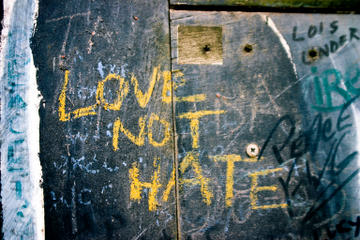Belfast Peace Wall
TIME : 2016/2/22 11:36:31

Belfast Peace Wall
Dating back to 1969, the Belfast Peace Walls, or Peace Lines, are a series of barriers that were put up between Irish Nationalist and Unionist neighborhoods throughout Northern Ireland. Originally intended to be only temporary structures between Protestant and Catholic neighborhoods, many of the walls have proven effective, and have been lengthened, strengthened and made more permanent fixtures. Many of the exteriors have been adorned with murals, much like the former Berlin Wall, making the Belfast Peace Walls a popular attraction.
There are currently 48 peace lines in Northern Ireland, stretching over 21 miles (34 km) in total, mostly in Belfast. The peace lines range in length from a few hundred yards to several miles long and may stand as high as 25 feet in some places. The walls are constructed of iron, brick and/or steel, while there are only a limited number of gates that allow access to cross through the walls between the neighborhoods. One of the best ways to see the Belfast Peace Walls is by driving along their lengths. You can also take an open-top bus tour, which will include stops at the Peace Lines-divided neighborhoods, like Falls and Shankill, where you can get off and explore.
Practical Info
If you’d like to visit the walls, you may not want to wait too long to do so. There has been much discussion in recent years over whether the walls are still necessary or should be torn down. There has been a recent decision that hopes to have all of the Peace Walls removed by 2023, if the neighborhoods consent.
